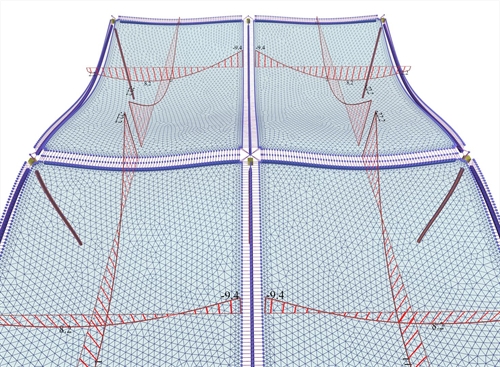A brief summary of the 30 years of experience in building technologies, is presented:
One of the most important advantages of our software is the BIM (Building Information
Modeling) philosophy which we implemented from the early days.
1982- Apostolos Konstantinidis initiates the BIM approach long
before it was globally adopted from the software and construction industry and he
incorporates the pi-SYSTEMS company aiming at the Greek market.
1984- Release of the Structural Design software “STATIKA”. This
program was an innovating computer application with graphics for QL Sinclair.
1986- Release of the Structural Design software “HoloSTATIKA” developed
in the C - programming language and Assembly.

2000- Launch of the stereoscopic virtual reality platform “KINESIS”
offering an innovative 3D environment to the subsequent applications.
2004- Release of the innovative software “StereoSTATIKA”, developed
in C++ and OpenGL, for the structural design of earthquake resistant buildings,
reaching 3500 licenses in Greece and Cyprus.

2007- Release of the innovative software “PANOPLIA” for the structural
detailing of earthquake resistant buildings. With PANOPLIA, the reinforcement bars
are displayed in 3D, showing every construction detail under the concrete in real
time.

2009- Release of the multilanguage and multiple codes supporting
platform “pi-SUITE”. integrating StereoSTATIKA, PANOPLIA and a beta version of the
Architectural detailing software “HoloMETRICA”
2013- Release of the 64-bit version of pi-SUITE, enhancing StereoSTATIKA
with the advanced finite element system “pi-FES” for modelling and analysis.

1974- The year that Apostolos Konstantinidis graduates from NTUA
(National Technical University of Athens), he starts writing the books about earthquake
resistant structures made of reinforced concrete and he publishes the book titled
"Pre-stressed concrete calculations".
1975, 1976 and 1978- Three new volumes titled «Reinforced concrete
applications are published, which sold in Greece more than 20000 copies (almost
95% of the active Greek engineering professionals of the time) each, becoming a
best seller.

1994- The three volumes titled 'Reinforced concrete applications'
are reprinted in order to include all regulation changes and research findings since
the last publication. These new volumes have sold more than 12000 each, since today.

1999- Six new educational books are written, ordered by the Greek
ministry of education, designed to be used in the middle level technical institutes
of Greece. The publication of these books, based on innovative software, is used
in the design and construction phase of reinforced concrete structures. The books
also contained images rendered by the company's rendering and virtual reality software.
2008- Volume A, titled “The Art of Construction and the Detailing”,
of the book series “EARTHQUAKE RESISTANT BUILDINGS” is published, comprising a full
description of the buildings structural frame and its behaviour, including loads
applied and materials used.

2012- Volume B, titled “Static and Dynamic Analysis according to
Eurocodes”, of the book series “EARTHQUAKE RESISTANT BUILDINGS” is published, presenting
the structural analysis of buildings, through which stresses and deformations are
calculated.

1996- A new company is established by the shareholders of pi-Systems,
aiming at the research and industrial implementation of innovative antiseismic technology.
The goal of this company was to design automatic machines that would perform the
3D formation of steel stirrups (stirrup machines), and the fabrication of many type
of stirrup sections, non-ending, multi-shape and spiral stirrups (Antiseismic Thorax)
for the reinforcement of all kinds of columns, beams, shear walls and foundation
structural elements.

Until today thousands of buildings have been constructed with Antiseismic Thorax,
which have demonstrated an excellent earthquake resistant behaviour (as been proved
during the destructive earthquake of the 20th September 1999)
1999- The definite advantage of antiseismic thoraces is certified
experimentally by the reinforced concrete laboratory of the National Technical University
of Athens. By 2000 it had been approved by the Greek Antiseismic Regulation authority,
with a significantly propitious aperture coefficient.
2000- The production rights for Greece are transferred over to
BITROS group.
2004- Next generation of earthquake resistant stirrups, Cellular
stirrups, designed and patented to have absolute industrial accuracy for precasting
purposes, using advanced metallurgy methods and new composite materials.

Cellular Stirrups” fulfil all traditional stirrups specifications and perform all
spiral stirrups specifications because (a) have not weak points and (b) secure the
continuity flowing of tension or compression stresses with the same way as the spiral
stirrups do.